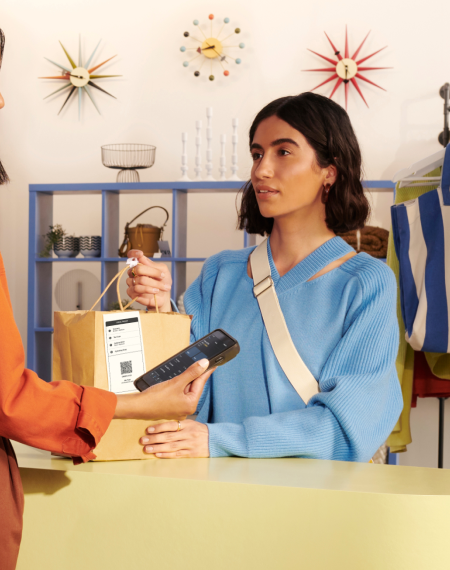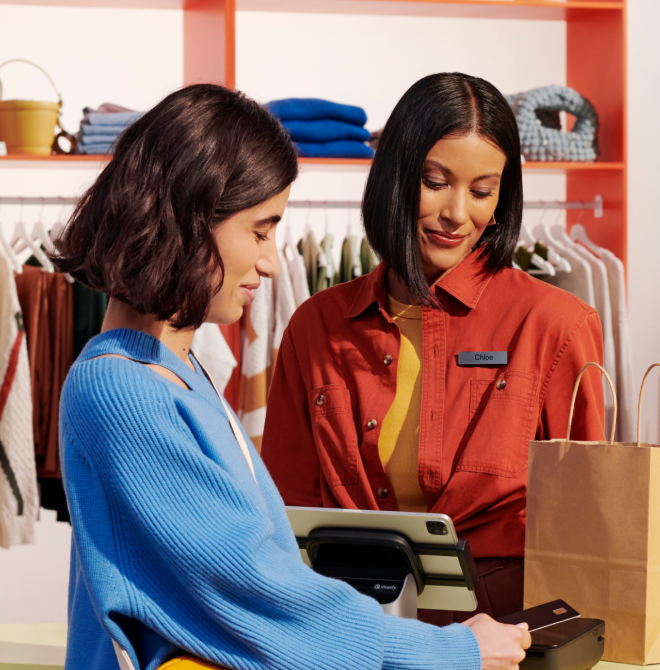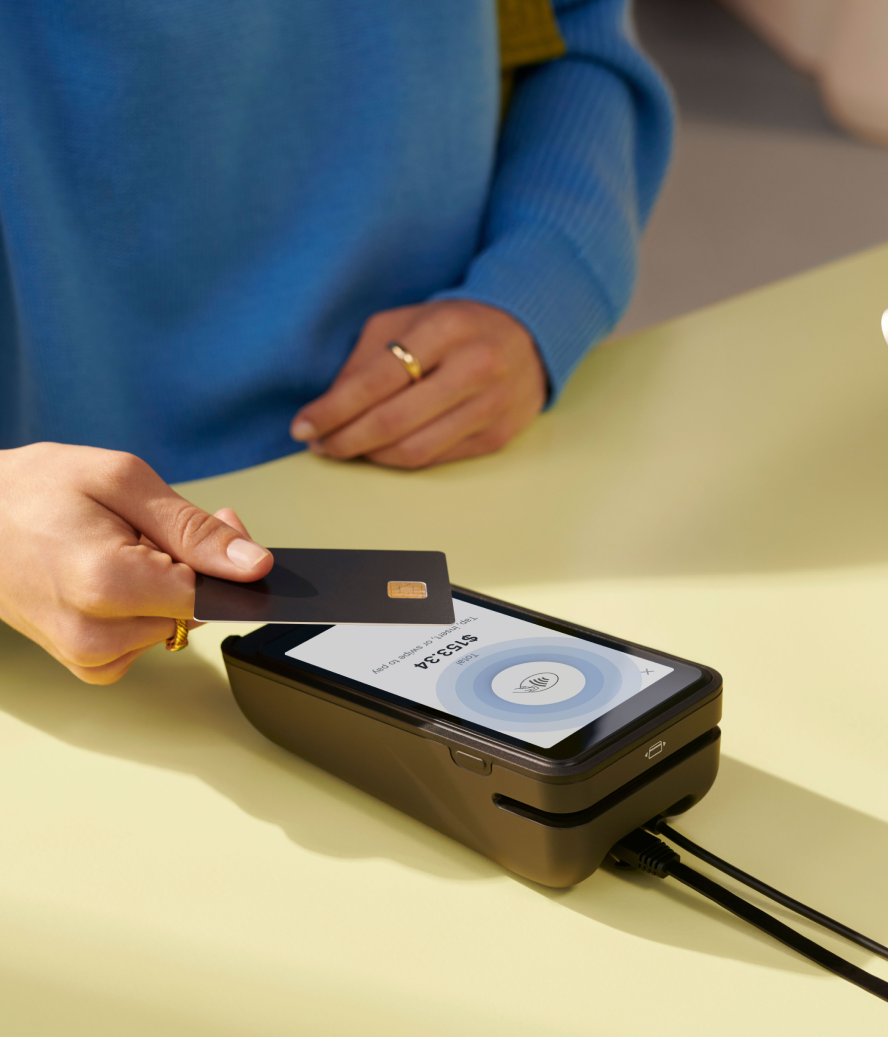If you’ve ever dreamt of opening your own store and have a knack for scents, a perfume business could be the ideal opportunity.
Consumers spend $9.41 billion on fragrances every year, making it a lucrative business opportunity for new entrepreneurs. But there’s a checklist of things to do before launching your own perfume brand, from ensuring compliance with the Food and Drug Administration (FDA) to choosing the right location for your perfume store.
In this guide, you’ll find a step-by-step guide on how to start a perfume retail business. We’ll also cover how much it costs to open this type of retail store, what you’ll need to get started, and tips to set you up for success.
How much does it cost to start a perfume business?
The average cost to start a retail business is just short of $40,000, but perfume businesses might need to spend more. Here’s a rough idea on how much you can expect to pay:
- Real estate: around $21.85 per square foot—more for high foot traffic areas such as malls or shopping centers.
- Business registration fees: between $500 and $300, depending on your business model and state.
- Fixtures and fittings: around $147 per square foot, depending on the complexity of the fitout.
- Point-of-sale (POS) system: between $0 and $89 per month.
- Staffing costs: around $15.50/hr for retail sales associates and $27.78/hr for store managers.
That said, there are ways to cut down costs and start your perfume brand on a budget. Products are smaller in size, which allows you to open a smaller location and save on rent. You could also experiment with pop-up shops to determine where your target market is, without the fixed commitment of a multi-year lease.
Types of perfume businesses
There are multiple retail business models to choose from when starting your own store. Here are three of the most popular amongst perfumeries.
Hybrid model
The hybrid model combines brick-and-mortar stores with an ecommerce website. This omnichannel business model offers the best of both worlds: nearby customers can visit your location to smell your perfumes, while online customers further afield can still buy products.
For the hybrid model to work effectively, choose a commerce platform that offers both POS and ecommerce. Shopify is the only platform to build both components on the same platform. It lets customers jump between both online and offline channels without the operational complexities that typically come with the hybrid business model.
Manufacturing and private labeling
If you have a keen nose and passion for product development, opt to manufacture your own perfumes. This gives you complete control over not just how your perfumes smell, but how they’re packaged.
Prefer to leave the essential oil formulations to an expert? Consider private labeling, where manufacturers will add your own branding onto their premade perfume bottles. It’s a good option if you want to launch your own perfume line but are keen to bypass the product development process. The manufacturer has already done that for you.
Resale
A resale business sources products from manufacturers to resell at a higher price through their own store. Acting as an intermediary between the perfume distributor and the customer, perfumeries opt to resell products to leverage established brand names with existing recognition in the market.
Profit margins are much lower in a wholesale perfume selling business; expect to keep just 15 to 50% of the product’s sale price. It’s also difficult to stand out in the busy perfume market because customers know they can get the same product elsewhere. Work on building a strong brand identity that helps you stand out.
How to start a perfume retail business
- Get funding
- Set up your perfume business legally
- Choose a location for your perfume store
- Design your retail store
- Create relationships with vendors
- Decide how you’ll manage inventory
- Choose a POS system
- Choose an ecommerce platform
- Hire and train staff
- Market your perfume business
1. Get funding
It’s expensive to start a perfume business. From licenses and registration to maintaining FDA compliance, costs can quickly add up.
Some entrepreneurs choose to secure funding to cover their startup expenses. This injection of capital gives you cash upfront to get your business off the ground. Options include loans from friends and family, bank loans, and business credit cards.
Before you jump into a loan application for your new perfume business, there are some considerations:
- Personal vs. business loans. Financial institutions have more risk when loaning money to a new business with no credit history. You may have to take out a personal loan, which means you’ll be personally liable to repay the debt. Your assets may be required as collateral.
- Affordability. Banks charge interest to turn a profit on debts they issue. Check that you can afford these repayments—you’ll still need to do so even if you don’t turn a profit in your perfume business.
- Ownership. Traditional loans don’t require you to give up equity in the company, but alternative funding sources (such as venture capitalists or investors) will.
2. Set up your perfume business legally
Entrepreneurs are generally considered to be a sole proprietor when they start selling products. However, it’s worth incorporating as a standalone business. Structures such as LLCs and S-Corporations treat your business and yourself as two legally distinct entities. This offers tax advantages while also protecting your personal assets.
Plus, depending on the state you’re operating in, you might need to get a seller’s permit to start a perfume retail business. You’ll get a unique identifying number that lets you collect sales tax on eligible products. These rates vary from state to state.
Because perfume falls under the cosmetics category, it’s mandated by the Food and Drug Administration (FDA). You don’t need explicit permission to start selling perfume, but ingredients must be safe for consumers. Products must also be labeled correctly and accurately, including any fragrance allergens.
You can also protect your new perfume business with product liability insurance. In the event that someone is injured by your products (like having an allergic reaction to one of its ingredients), the insurance provider will handle any claims and lessen the financial damage to your company.
3. Choose a location for your perfume store
Shopping malls, downtown, main street—the options are endless. Each retail location offers its own advantages and disadvantages.
For example, while you might pay a higher price for a store in a busy shopping district, you’ll benefit from high surrounding footfall. People might enter your store impulsively after they walk by.
Out of town locations, on the other hand, are much cheaper to rent. But they don’t have the high levels of foot traffic that a mall would. You’ll need to invest more into marketing to drive customers towards your perfume business.
Weigh up the tradeoffs and conduct market research to find the right spot for your perfume retail business. It pays to go where your target market is, so gather data and customer feedback to identify where you can get the best spot for your budget.
4. Design your retail store
The overall look and feel of your perfumery can influence not only how many people come in, but their likelihood of purchasing.
Make the most out of your window displays. Showcase your most unique perfume bottles, highlight any promotions or sales, and use digital signage to run engaging videos that showcase and describe your scents.
The same concept applies to the internal layout of your store. The herringbone store layout lends itself well to perfume retail businesses. It places bestsellers on a “power wall” to the right-hand side of the store’s entrance. Checkout is at the back, in the middle, giving customers complete visibility over your perfumes.
Speaking of storage: perfumeries stock small-sized inventory that lends itself to shelving units. Place bestsellers or items in the most attractive packaging at eye-level.
💡Tip: Use scent marketing to aid with product discovery in-store. Proven to increase retail sales by as much as 11%, drop a few beads of an essential oil into a diffuser. It can spark conversations with new customers who enter your store and say “It smells great in here!”

5. Create relationships with vendors
Reliable vendors are the lifeblood of any retailer. Whether you’re sourcing raw materials to make your own perfumes or working with wholesale suppliers, the benefits of strong relationships are tenfold.
First, you can work with your suppliers to mitigate any supply chain risks that could cause stockouts. Suppliers may also be more open to negotiation—either on payment terms, minimum order quantities, and shipping options—if they feel valued.
Building strong vendor relationships isn’t complicated. Use detailed contracts to set expectations, pay their invoices on time, and establish consistent lines of communication.
6. Decide how you’ll manage inventory
It’s tough to get a grasp on inventory as a new retailer. Deciding how much stock to order can feel like a shot in the dark. You don’t know which products will be bestsellers and which will sit on the shelf.
Once you’ve bought your initial load of inventory, document how you’ll monitor it. Shopify has native inventory management tools that unifies your data wherever you sell. If you sell a product online, for example, your store’s POS system will automatically display the updated figure to give complete visibility into your stock.
As for storage, perfume is unique in the sense that it must be stored in a cool, dark, and dry place. And because the chemical composition can change over time, products also have expiration dates. You’ll lose money if a product passes its expiration date and remains unsold.
💡Tip: Install the free Stocky app to get advanced inventory management features within Shopify POS. Use it to set safety stock levels, raise purchase orders with suppliers when stock falls below this level, and view in-depth inventory reports to make smarter restocking decisions.
7. Choose a POS system
A POS system is the combination of hardware and software that powers your perfume retail store. More than just a tool to process customer orders, you can use your POS system to view inventory data, save customer details, run a loyalty program, and more.
The best POS systems can handle both in-store and online transactions. Shopify is the only platform to do this natively. POS and ecommerce are built on the same platform, meaning any data you collect is complete and accurate everywhere you sell.
Here’s a quick checklist on how to configure your new POS system:
- Connect your hardware (barcode scanners, receipt printers, etc.)
- Set up payment processing and run a test order
- Integrate inventory management apps
- Configure reporting features
- Train staff on how to operate the system
8. Choose an ecommerce platform
An ecommerce platform powers your perfume business’ online store. It’s a way to showcase your products to customers without a nearby store, take online payments, and generate shipping labels to deliver their orders.
You’ll see tons of ecommerce platforms packaged as fancy website builders. Shopify is more than that. It works seamlessly with your POS system so that order, inventory, and customer data lives on the same unified platform—with advanced theme customization and checkout capabilities that keep customers coming back.
Take FragranceNet.com, for example. Its previous store was built on a custom platform, yet the retailer found that the core of its customer base were on-time shoppers who didn’t log into an account. It also struggled to offer multiple payment methods that complicated checkout.
FragranceNet.com turned to Shop Pay to streamline its checkout process and improve customer retention. The checkout technology identifies users within a matter of seconds and sends a one-time code to fulfill their stored payment and shipping information at checkout.
“We are now able to not only provide a better experience to existing customers, but also attract those who were not shopping with us before,” says chief marketing officer Michael Nadboy. “To be able to do both, that’s really what the objective is.”
9. Hire and train staff
Retail businesses have many moving parts—and that’s just to keep the store running smoothly. It helps to have an extra pair of hands to assist with tasks such as:
- Opening and closing the store safely
- Designing window displays
- Helping customers find their signature scent
- Ringing up orders on your POS system
- Restocking inventory
If you’re worried about inflating your perfume store’s operating expenses so early on, consider outsourcing. Freelancers, agencies, and consultants can help with specialist tasks—from marketing your perfume store to fulfilling customer orders—to free up your own time without the fixed expense of a salary.
Offer comprehensive training to whoever you’re enlisting help from. Get them up to speed with using your POS system, explain your brand values, and document key retail operations to keep things running smoothly.
💡Tip: Shopify POS integrates with workforce management tools like EasyTeam. This lets you schedule staff rotas, track sales commission, and run payroll—all from your Shopify POS dashboard.
10. Market your perfume business
A soft opening can get people excited about the launch of your new perfume store. Invite a limited group of people—such as friends and family, local journalists, or customers who’ve bought through your online store—to gather their feedback. The event acts as a trial run to iron out any teething issues before you officially start welcoming new customers.
Once the store is open, use retail marketing strategies to drive customers in-store. Popular techniques include:
- Running a contest or giveaway where entrants must complete a task (such as subscribing to your email list or following you on social media) to participate.
- Sending exclusive offers to email subscribers.
- Hosting an event in-store, whether that’s a perfumery masterclass or workshop on how to find your signature scent.
- Creating a loyalty program that rewards customers for repeat purchases.
- Partnering with other local businesses on joint marketing campaigns.
Open your perfume retail business with Shopify
With attention to detail, market research, and knack for finding beautiful scents, opening a perfume store can be a lucrative venture—even for new entrepreneurs. Most of these things you can learn as you go.
Regardless of store size or perfume specialty, it pays to have a reliable toolstack to power your retail store. Shopify POS is exactly that: a unified operating system designed for everywhere you sell.
How to start a perfume retail business FAQ
Do I need a license to sell perfume?
You don’t need a license to sell perfume, but because it’s classed as a cosmetic, the perfume industry is regulated by the FDA. You must ensure compliance with FDA regulations, such as product labeling standards and using ingredients that are safe for human consumption.
How do I become a perfume reseller?
- Create a business plan
- Research your target market
- Create a distribution plan
- Get a wholesale license
- Build strong supplier relationships
- Determine distribution prices
- Set minimum order quantities
- Manage inventory
- Build an online website
- Market your perfume reselling business
Is it profitable to sell perfume?
Selling perfume can be profitable if you’re able to source or manufacture products for less than you sell them for. To make it a successful business, minimize your overheads, sell high-quality products, and focus on the customer experience.
How to start a small perfume business?
- Write a business plan
- Get funding
- Set up the business structure
- Secure licenses and permits
- Choose a retail location
- Source inventory from suppliers
- Configure a POS system
- Hire and train employees
- Market your new perfume business





